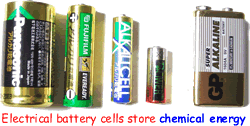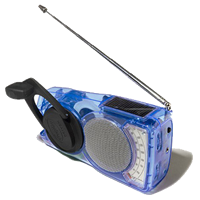Devices that store energy to use later!
Rechargable batteriesThese store energy as chemical energy - but unlike regular batteries they can be recharged when they run out of chemical energy. To do this the process of 'using them' is reversed. When you 'use' a battery, you transfer its chemical energy into electrical energy to drive some device or other. When you charge a battery you put electrical energy into the battery that is then stored as chemical energy. To do this you usually have to insert them into a specially designed charging device. This converts the mains voltage into the voltage required by the batteries and then the electrical energy is stored as chemical energy.
By storing the sun's energy solar garden features can be made to 'work' even on cloudy days. By incorporating a 'backup' rechargable battery the Sun's energy can be used in conjunction with stored energy to give a steady flow of water. A typical water feature will incorporate a solar panel (to collect the Sun's energy and convert it to electrical energy), rechargable batteries and an electric pump (to convert the electrical energy into gravitational potential energy of the water). The GPE is then transferred into kinetic energy as the water cascades.
Storing energy in a spring
This vid-clip shows a radio that has no batteries at all - it is just powered by the spring inside - that you wind up!
|
Follow me...
|









